The powerful compact laptop is now a reality. The various technological developments of recent years now allow the integration of processors and graphics cards straight from gaming laptops into a 14-inch ultrabook barely thicker than a smartphone. And by adding an OLED screen, with a frequency of 90 Hz moreover, Asus seems to hold the recipe for success. But is it that simple? Some answers through our VivoBook Pro review.
| PROS | CONS |
| 16:10 High Definition OLED screen | Charging via USB-C not possible |
| Powerful processor (Ryzen 5800H) | Soldered memory |
| 63 Wh battery and long battery life | |
| 90Hz refresh rate |
General Info
| Asus VivoBook Pro 14 OLED | |
| Released | September 2, 2021 |
| Brand | ASUS |
| Model | ASUS VivoBook Pro 14 |
| Dimensions | 317 x 229 x 19 mm |
| Weight | 1.4 Kg |
| Colors | Quiet Black, Meteor White |
| Processor | AMD Ryzen 7 5800H Processor (16M Cache, up to 4.4GHz) |
| Display | 14 inch |
| Display Features | OLED WQXGA + 16 / 10th 90Hz 0.2ms 100% DCI-P3 Pantone 600cd / m² (2880×1800, gloss) |
| Resolution | 2880 x 1800 pixels |
| Graphics | NVIDIA GeForce RTX 3050 |
| RAM | 16 GB DDR4 (soldered) 3200MHz |
| Storage | 1TB M.2 SSD (NVMe PCIe 3.0) |
| OS | Windows 10 64-bit |
| Connectivity | 1 USB 3.0 + 2 USB 2.0 + 1 USB 3.1 Type-C (Gen1), HDMI 1.4, microSD |
| Network | Wi-Fi ax (2×2, Intel Wi-Fi 6 AX200) |
| Bluetooth | Bluetooth 5.0 |
| Audio | 2 Harman Kardon speakers |
| Numeric keypad | No |
| Battery | 8 hours / Li-Polymer 3 cells 63Whr |
| Type | Laptop |
Design
With its VivoBook range, Asus intends to keep the sobriety so dear to many potential buyers while bringing a little touch of freshness to appeal to a younger audience, high school or college students looking for an ultrabook capable of supporting them daily. The latter is materialized here by a plate positioned on the back of the screen, showing the name of the model and some hashtags. Inside, the Esc key is adorned with a bright orange when the Enter key is placed on a pattern line. The whole remains despite everything sober enough to suit the most significant number.

On the finish side, if the exterior makes a good impression, especially with a chassis with excellent rigidity, the interior leaves a more mixed feeling. In question, the coating of the slightly grainy wrist rests and a more marked sensitivity to pressure on its right part. There is nothing too much of a problem, at least when compared to mid-range laptops.
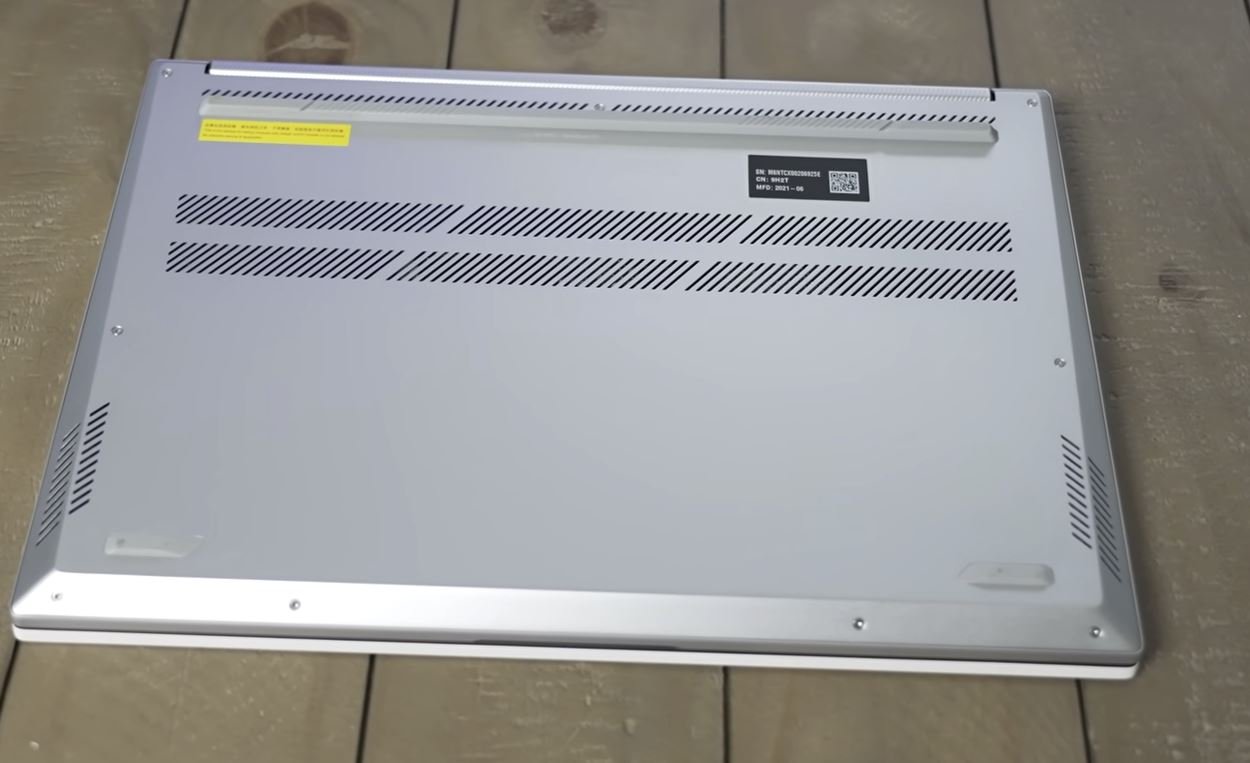
Access to components does not pose many difficulties but is of no interest. Only one (occupied) SSD slot is accessible. RAM is soldered to the motherboard like other 13-14 inch ultrabooks. To be taken into consideration at the time of purchase, therefore.
Display
It is now time to talk about THE strong point of this VivoBook Pro 14: its screen. Asus ultrabook equipped with an OLED panel stands out from the competition by embedding a technology usually reserved for high-end televisions and smartphones. As a bonus, Asus drives home the point by offering a frequency of 90 Hz (against 60 Hz usually) and a definition of 2880×1800 pixels without forgetting a 16:10 ratio. The VivoBook Pro 14 immediately dazzles with its exceptional contrast ratio. Its wide range of colors (sRGB, RGB, and DCI-P3 spaces are fully covered), not to mention its increased fineness of display thanks to its higher pixel density than a Full HD screen.
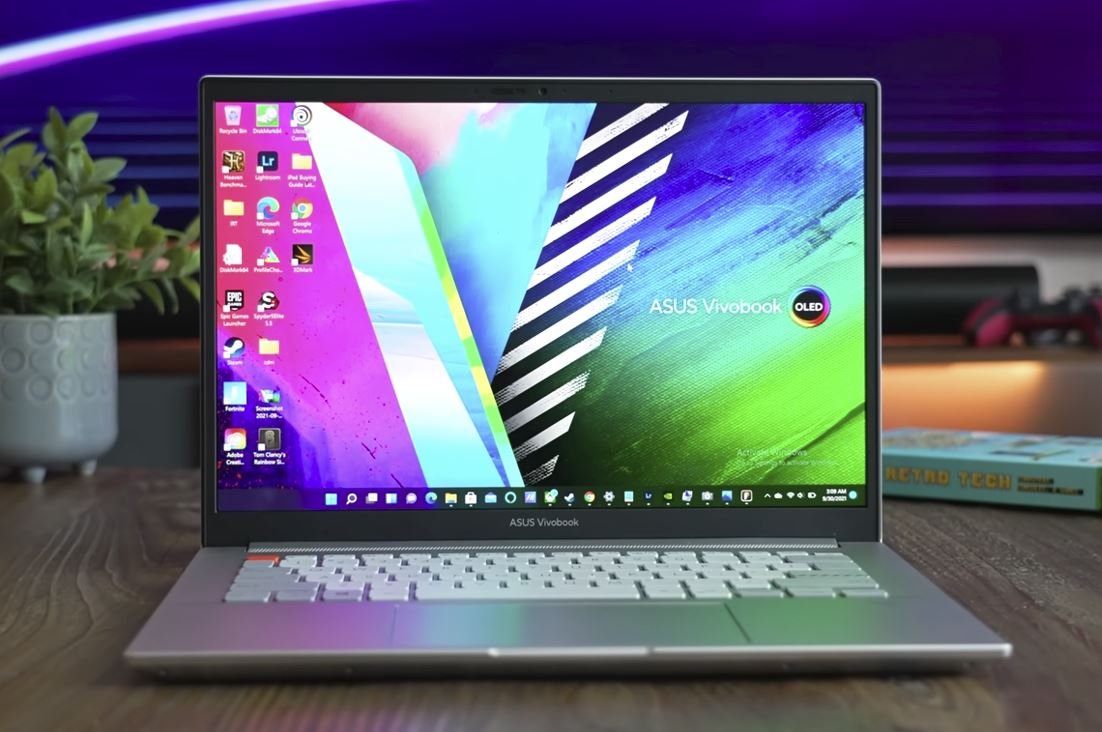
However, should we consider an OLED panel as the must-have? Not necessarily. On the one hand, the brightness of 400 nits is not always sufficient to compensate for the reflections of an exceptionally bright panel. But also, and above all, the risk of “marking” remains greater with an OLED screen with an LCD panel. Asus offers several safeguards to limit the risks. Still, depending on the uses, this remains an element to consider if your use involves leaving the screen frozen on a static window for several hours.
The screen frame of this Asus VivoBook Pro 14 is not the most borderless at the moment, its upper amount compensates for its thickness (12 mm) by the presence of a small accessory that will hit the mark for users concerned about their private life. The webcam can be hidden thanks to an integrated cover. Larger than that of the Dell Inspiron 16 previously tested, it offers the advantage of easier handling. The only downside is its flashy color, which is certainly consistent in terms of design, tends to catch the eye at the slightest opportunity.
As for the webcam’s image quality (720P), it remains disappointing like many laptops on the market. On the other hand, the microphones offer a much more satisfactory capture.
Performance
Always to appeal to creatives and other image professionals, Asus has chosen to abandon less swift, low-power processors in favor of a Ryzen 7 5800H. One of the most powerful AMD CPUs today with eight cores (16 threads) and 45W TDP. The processor can also be supported by a GeForce RTX 3050 (Ti) on specific versions of the VivoBook Pro 14.
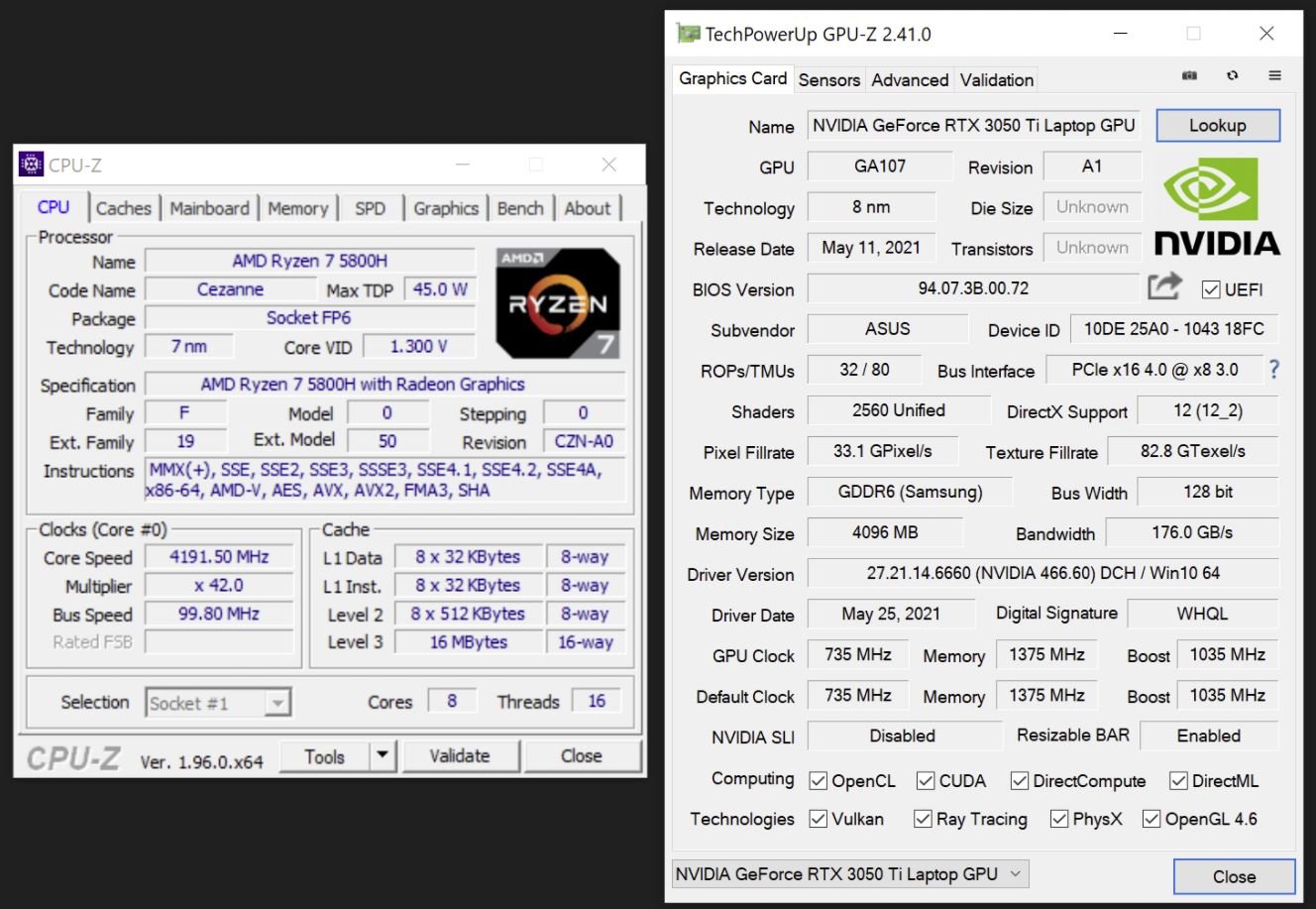
This results in better performance than most 13 or 14-inch laptops and much closer to 15, 16, or 17-inch laptops (gamers). An undeniable asset for nomads needing a lot of CPU computing power. With this in mind, it seems essential to us to associate it with a GeForce to have the possibility of playing (on average around 40 FPS in Full HD) and especially to take advantage of GPU acceleration more and more. More important, especially in video editing software.
Connectivity
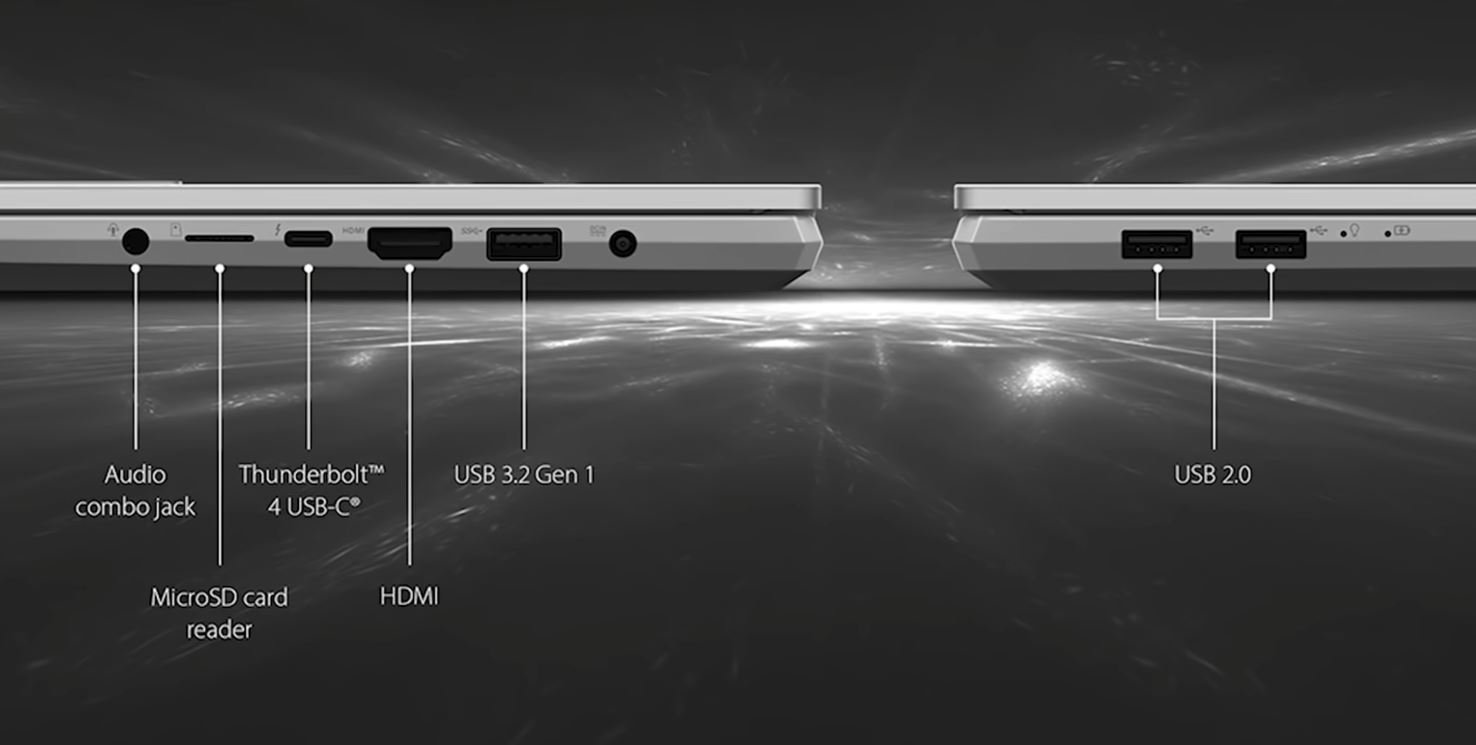
At first glance, quite complete, the connectivity of this VivoBook Pro 14 may ultimately leave a bitter taste for some users. In question, two USB 2.0 ports and a USB-C port are only compatible with data. In other words, it cannot be used to recharge the battery or as a video port.
Audio

Despite an audio system signed by Harman Kardon and DTS Audio, the VivoBook Pro 14 does not deserve to be dwelled on. Blame it on a cold rendering and, above all, a tendency to saturate (at least on our copy).
Keyboard / Touchpad
Fortunately, the VivoBook Pro 14 can count on its keyboard to forget its sound part. Typing is pleasant thanks to the well-sized keys (15.8×15.3 mm – 3.1 mm spacing) offering as a bonus a very soft touch thanks to an ideal stroke (1.4 mm).
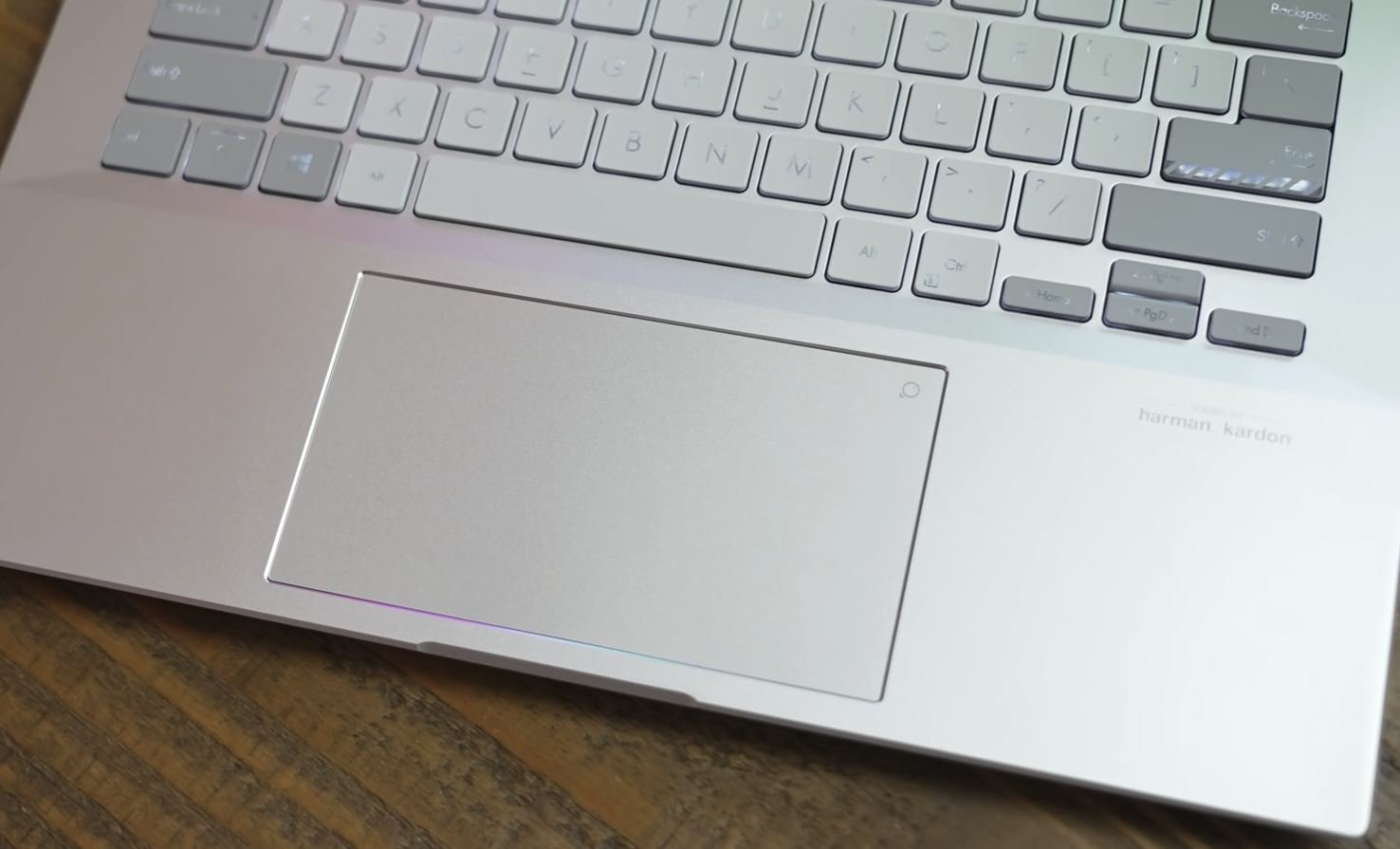
The backlight can adjust to three positions. Because during the day, activating the backlighting makes the lettering of the keys illegible!
The power button may seem “classic,” but it does include a Windows Hello compatible fingerprint sensor.
The touchpad benefits from a generous surface (130×75 mm) with a glass surface bonus. An asset to enjoy a faster and more precise glide.
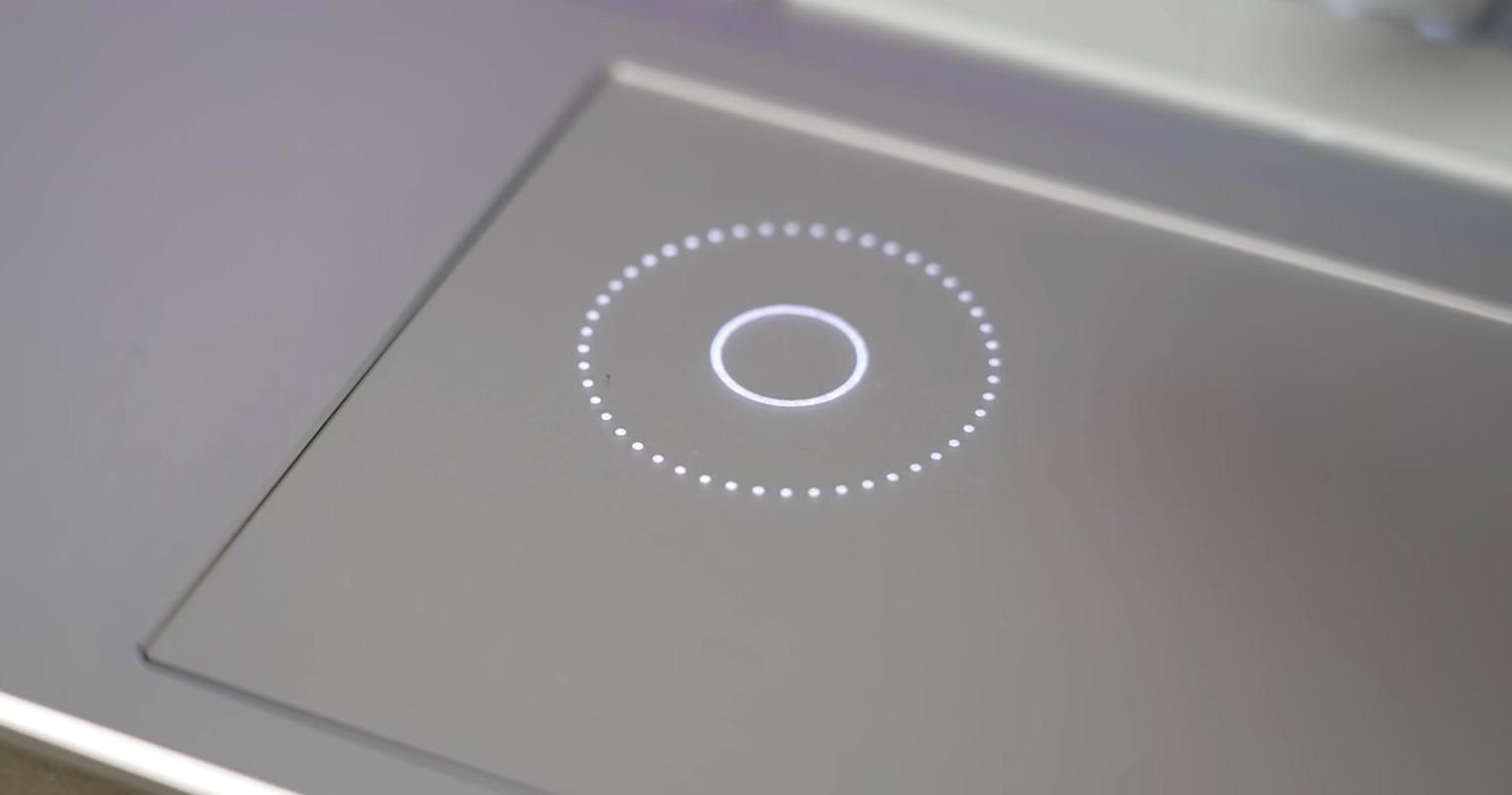
But the touchpad isn’t just for moving the cursor. Like other laptops of the brand, Asus offers it a second use. No virtual numeric keypad here but a “dial.” In other words, a kind of touch wheel, the objective of addressing content creators.
Photographers, YouTubers, and other video professionals will thus be able to take advantage of additional integrations in their favorite software. Lightroom, Photoshop, Première Pro are thus natively supported. Thus, it becomes possible to zoom, adjust the size of a tool, or adjust a cursor simply by rotating your fingertip on this “dial.” As for other software, it is possible to add partial support based on keyboard shortcuts.
Everyone will judge according to their habits and propensity to shake them up. Still, the production is impeccable and does not call for criticism at this level. And for those wondering how to activate this virtual dial, you have to slide up and down diagonally at the pictogram level and not try to press on it as logic would like.
Battery
The compact 14-inch format combined with low weight (1.4 kg), the VivoBook Pro 14 is aimed at mobility fans. Yes, but with its “high performance” processor, 90 Hz screen, and an average capacity battery (63 Wh), the Asus ultrabook cannot compete with the segment’s leaders in terms of battery life.
In practice, it is reasonable to expect an average battery life of 8:30 (web browsing via WiFi, brightness set at 140 nits). It is, however, possible to grab an extra hour by forcing the screen frequency to 60 Hz in Windows display settings.
The 130W power supply is not the most compact. In addition, as mentioned previously, impossible to use a USB-C charger for troubleshooting!
Note the possibility of blocking the battery charge at 80 or even 60% via the “battery health charging” option offered in the MyAsus utility. This should help conserve battery life if you use your laptop most of the time on AC power without needing the battery’s full capacity.
Conclusion!
On paper, the Asus VivoBook Pro 14 has strong arguments to stand out in a segment where competition is tough. Starting with its AMD Ryzen Octo Core processor associated with a dedicated graphics card. What offers solid performance, closer to those of a gaming laptop than ultrabooks of this diagonal.
Another asset, an OLED screen. The result is advanced colorimetry and deep blacks with the bonus of a frequency of 90 Hz and a 16:10 format.
These are undeniable qualities, but a laptop cannot be reduced to its screen and its processor. And on the rest, it is clear that the account is not there. At least for the most upscale versions of this VivoBook, whose prices can flirt with $1,500! In this price range, and staying with Asus, the Zephyrus 14 appears more exciting and homogeneous.
Conversely, the more affordable versions of the VivoBook Pro 14 sold between 800 and 1000 $ are much more enjoyable. There, chassis, battery, and the few concessions present denote less. And above all, no competitor can boast of offering such a price/performance ratio on this diagonal.




